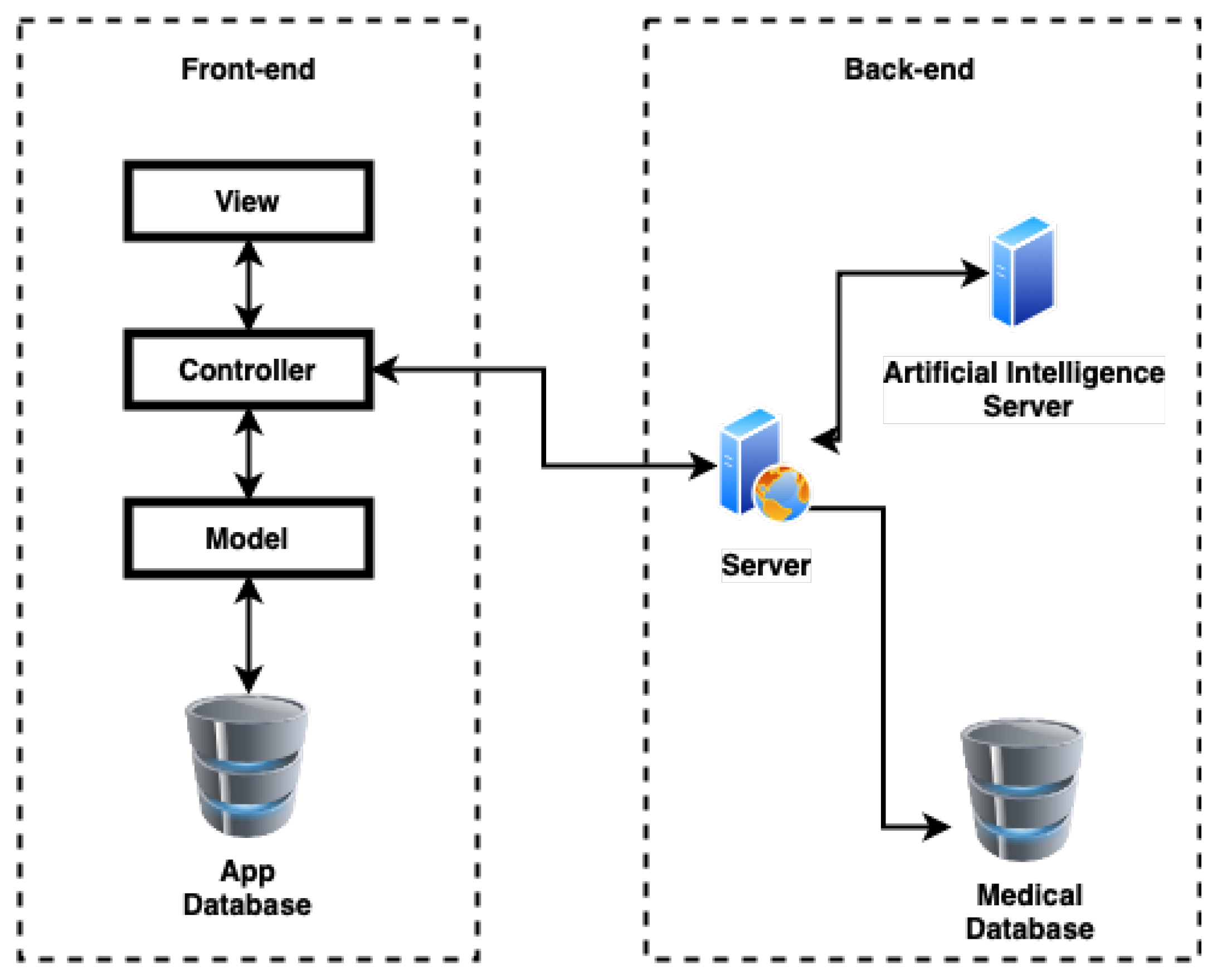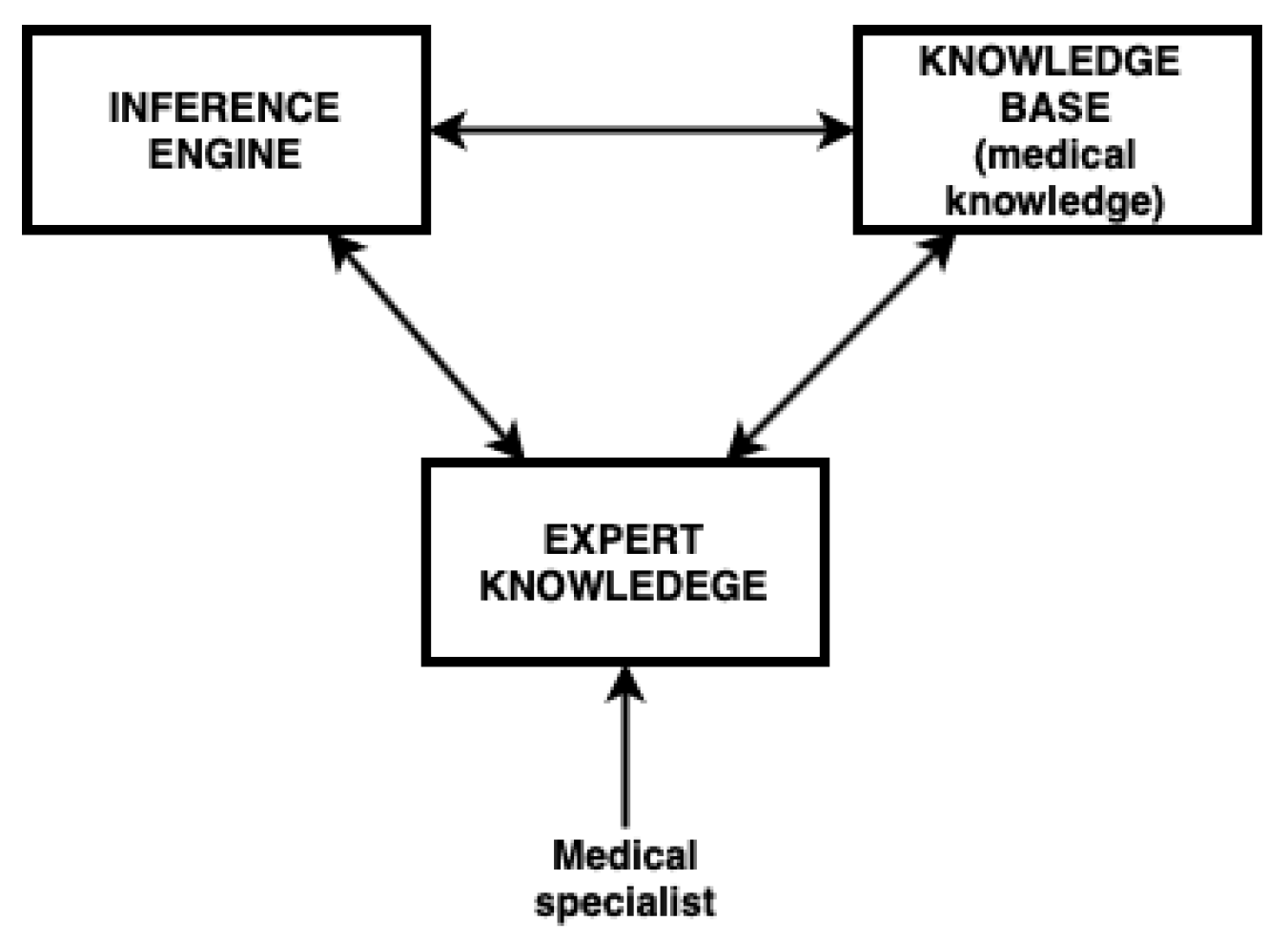PRACTICUM DIRECT Simulator for Decision Making during Pandemics †
Abstract
:1. Introduction
2. Materials and Methods
2.1. Software Architecture
2.2. Proposed Model
2.3. Medical Variables
3. Conclusions
Funding
Institutional Review Board Statement
Informed Consent Statement
Conflicts of Interest
Abbreviations
| SARS-CoV-2 | Severe Acute Respiratory Syndrome Coronavirus 2 |
| AI | Artificial Intelligence |
References
- Sackett, D.L.; Rosenberg, W.M.; Gray, J.M.; Haynes, R.B.; Richardson, W.S. Evidence based medicine: What it is and what it is not. BMJ 1996, 312, 71. [Google Scholar] [CrossRef] [PubMed] [Green Version]
- Petersen, E.; Koopmans, M.; Go, U.; Hamer, D.H.; Petrosillo, N.; Castelli, F.; Storgaard, M.; Al Khalili, S.; Simonsen, L. Comparing SARS-CoV-2 with SARS-CoV and influenza pandemics. Lancet Infect. Dis. 2020, 20, e238–e244. [Google Scholar] [CrossRef]
- Borasio, G.D.; Gamondi, C.; Obrist, M.; Jox, R. COVID-19: Decision making and palliative care. Swiss Med. Wkly. 2020, 150, 1314. [Google Scholar] [CrossRef] [PubMed]
- Fretheim, A.; Brurberg, K.G.; Forland, F. Rapid reviews for rapid decision-making during the coronavirus disease (COVID-19) pandemic, Norway, 2020. Eurosurveillance 2020, 25, 2000687. [Google Scholar] [CrossRef] [PubMed]
- Lal, A.; Ashworth, H.C.; Dada, S.; Hoemeke, L.; Tambo, E. Optimizing pandemic preparedness and response through health information systems: Lessons learned from Ebola to COVID-19. In Disaster Medicine and Public Health Preparedness; Cambridge University Press: Cambridge, MA, USA, 2020; pp. 1–8. [Google Scholar]
- Chang, H.; Yu, J.Y.; Yoon, S.Y.; Hwang, S.Y.; Yoon, H.; Cha, W.C.; Sim, M.S.; Jo, I.J.; Kim, T. Impact of COVID-19 Pandemic on the Overall Diagnostic and Therapeutic Process for Patients of Emergency Department and Those with Acute Cerebrovascular Disease. J. Clin. Med. 2020, 9, 3842. [Google Scholar] [CrossRef] [PubMed]
- Russel, S.; Norvig, P. Artificial Intelligence: A Modern Approach; Prentice Hall: Hoboken, NJ, USA, 2003; Volume 178. [Google Scholar]
- Clancey, W.J. The epistemology of a rule-based expert system—A framework for explanation. Artif. Intell. 1983, 20, 215–251. [Google Scholar] [CrossRef]


Publisher’s Note: MDPI stays neutral with regard to jurisdictional claims in published maps and institutional affiliations. |
© 2021 by the authors. Licensee MDPI, Basel, Switzerland. This article is an open access article distributed under the terms and conditions of the Creative Commons Attribution (CC BY) license (https://creativecommons.org/licenses/by/4.0/).
Share and Cite
Puente-Castro, A.; Galdo, B.; Criado, I.S.; Boileve, D.B.; Rabuñal, J.R.; Pazos, A.; Martínez-Pillado, M. PRACTICUM DIRECT Simulator for Decision Making during Pandemics. Eng. Proc. 2021, 7, 48. https://doi.org/10.3390/engproc2021007048
Puente-Castro A, Galdo B, Criado IS, Boileve DB, Rabuñal JR, Pazos A, Martínez-Pillado M. PRACTICUM DIRECT Simulator for Decision Making during Pandemics. Engineering Proceedings. 2021; 7(1):48. https://doi.org/10.3390/engproc2021007048
Chicago/Turabian StylePuente-Castro, Alejandro, Brais Galdo, Ismael Said Criado, David Baltar Boileve, Juan R. Rabuñal, Alejandro Pazos, and Modesto Martínez-Pillado. 2021. "PRACTICUM DIRECT Simulator for Decision Making during Pandemics" Engineering Proceedings 7, no. 1: 48. https://doi.org/10.3390/engproc2021007048
APA StylePuente-Castro, A., Galdo, B., Criado, I. S., Boileve, D. B., Rabuñal, J. R., Pazos, A., & Martínez-Pillado, M. (2021). PRACTICUM DIRECT Simulator for Decision Making during Pandemics. Engineering Proceedings, 7(1), 48. https://doi.org/10.3390/engproc2021007048







